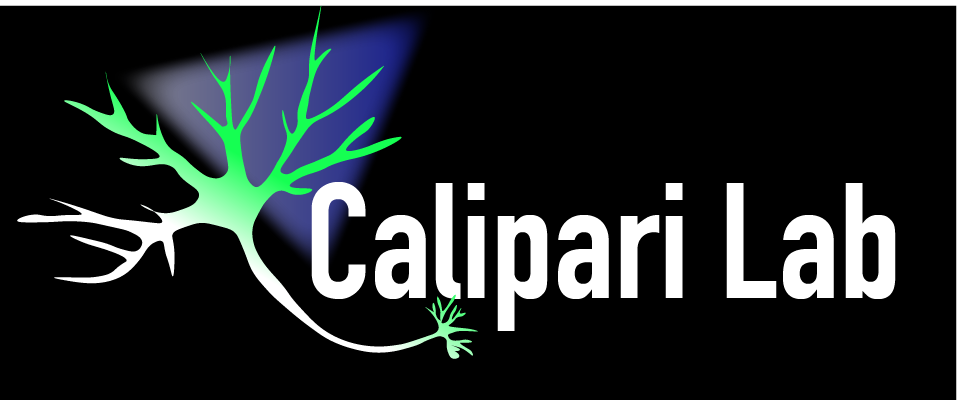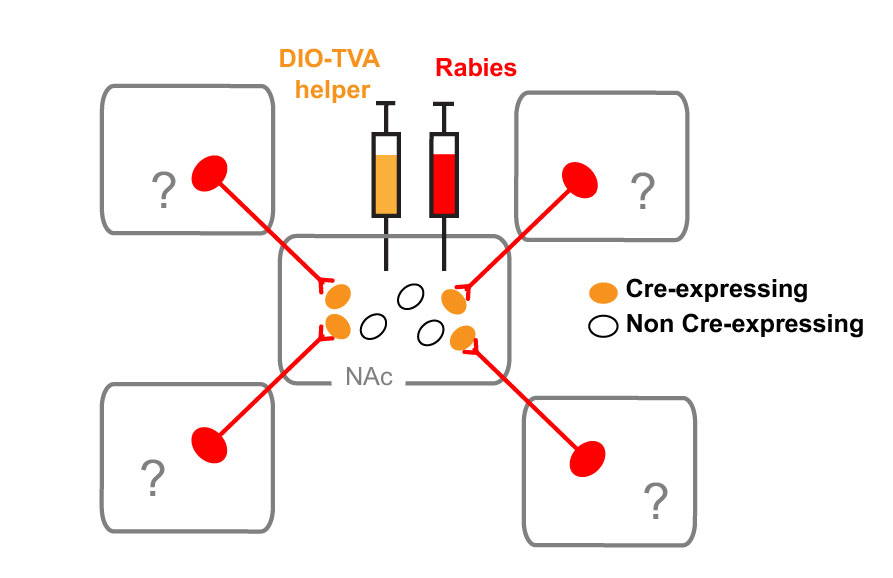Our work with Viral-Mediated Gene Transfer
Using Cre-recombinase to express transgenes in a cell-type specific fashion in vivo.
Understanding drug effects at the dopamine transporter
Using viral strategies, we are able to express and knock down gene targets of interest in vivo. The allows us to modulate molecular effectors in a cell-type and pathway specific fashion (example left). We are currently making site-directed mutants of the dopamine transporter in order to express these variants in specific dopaminergic projection population to define their role in motivated behaviors. The ability to bidirectionally modulate molecular targets allows for unprecedented specificity in determining how these molecules control the precise activity of neural circuits and how that relates to complex behaviors.
Selected Publications
Using viral strategies to trace and define specific projection populations
Rabies viral tracing allows for tracing of monosynaptic inputs to defined subpopulations. The modified rabies virus requires a glycoprotein and TVA receptor to enter cells, and move transsynaptically; thus, to identify direct projectors, we use this viral tracing strategy. Using transgenic mice expressing Cre-recombinase in genetically defined subpopulations, the “helper” virus, carrying TVA and glycoprotein, will only be expressed in these neurons, allowing the tracing of projector populations that innervate each ensemble. This will allow us to create a comprehensive report of key circuits involved in the ability of predictive cues to guide behavioral responses, while simultaneously setting the framework to focus on specific projection pathways in the future.
Defining projections to Cre-expressing neuronal populations


